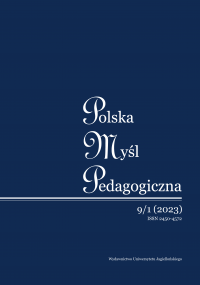EDUCATION OF POLISH CHILDREN AND YOUTH IN DIGGLEFOLD AND GATOOMA, SOUTHERN RHODESIA, IN 1943–1948
EDUCATION OF POLISH CHILDREN AND YOUTH IN DIGGLEFOLD AND GATOOMA, SOUTHERN RHODESIA, IN 1943–1948
Author(s): Witold ChmielewskiSubject(s): Social history, History of Education, WW II and following years (1940 - 1949), Sociology of Education
Published by: Wydawnictwo Uniwersytetu Jagiellońskiego
Keywords: refugees; students; teachers; school; education;
Summary/Abstract: During World War II, between 10,000 and 20,000 Poles, mainly women and children – who had been evacuated from the Soviet Union together with the Polish Army in the USSR under the command of General Władysław Anders – found themselves in East-Central and Southern Africa. They were to live in settlements specially created for them. Schools were organized there for children and young people of school age. Among the best Polish schools in Africa were the junior high and high schools in Digglefold, and later also in Gatooma, Southern Rhodesia (now Zimbabwe). Both schools were referred to as the School Center, and were characterized by a high standard of education. The organization and curriculum were based on the pre-war Polish educational law and the teaching plan in force at the time. The teaching staff consisted of Polish teachers. The purpose of the schools was to educate and prepare the young generation of Poles for life, as well as to protect them from denationalization. After the war, most of the refugees did not want to return to Poland, which had become enslaved by the Soviet Union. They remained in exile, abiding by the values they had learned in the schools in Digglefold and Gatooma.
Journal: Polska Myśl Pedagogiczna
- Issue Year: 1/2023
- Issue No: 9
- Page Range: 137-166
- Page Count: 30
- Language: English

